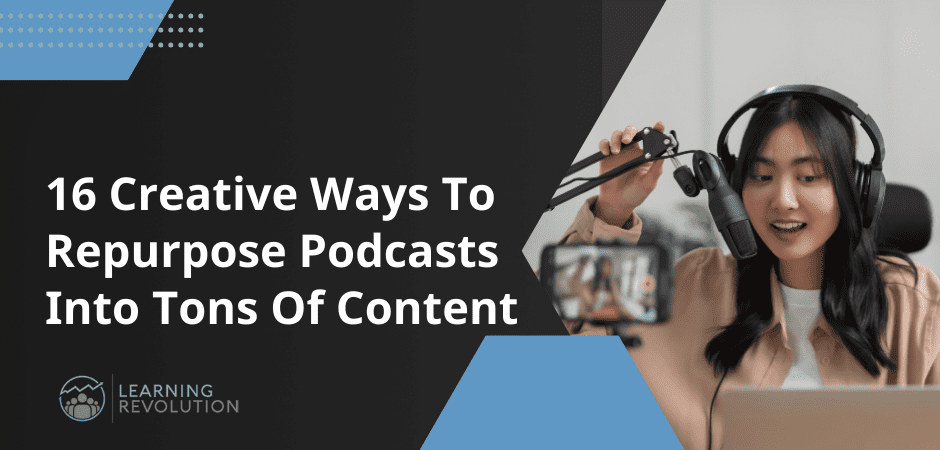

Podcasting is hard work.
Recording a podcast episode can take weeks of preparation, hours of recording, and days of editing.
So, when you put so much work into creating a value-packed podcast, why not use it to drive as much traffic and brand exposure as possible?
How? By repurposing your podcast into different content types.
Don’t worry if you’ve never done it before because, in this article, we’ll share ways to repurpose your podcast content and show you how to do it with examples.
Let’s get started.
What Is Podcast Repurposing And Why It Is Important
Converting your podcast into different content types to gain more exposure, traffic, and brand awareness is called podcast repurposing. It helps you increase your podcast’s ROI by allowing you to use the same content in multiple ways on different platforms.
For example, you can turn your audio podcast into a video for YouTube, Facebook, and other video streaming sites to get more views and grow your audience.
Podcasts are perfect for repurposing because they are usually long-duration discussions or audio files with tons of content and value for your audience.
But only your most loyal fans listen to every word of your podcast.
Most people listen to only a few parts of your discussion or play your podcast at 1.5x or 2x speed due to time shortage. And then there are millions who don’t listen to podcasts at all.
Repurposing your podcast content helps you reach all of them.
The result? More people listen to your content, subscribe to your full podcast, sign up to your email list, and buy your products.
How To Repurpose Podcast Content
Planning, recording, and editing your podcast is the hard part. You’ve already done that.
Now’s the time to spread your message far and wide by repurposing your podcast in the following ways.
1. Convert Into Video Podcasts
Converting your audio podcasts into videos for platforms like YouTube and Facebook is one of the best ways to repurpose your content.
According to a recent study, most podcast listeners now prefer video podcasts over audio-only content.
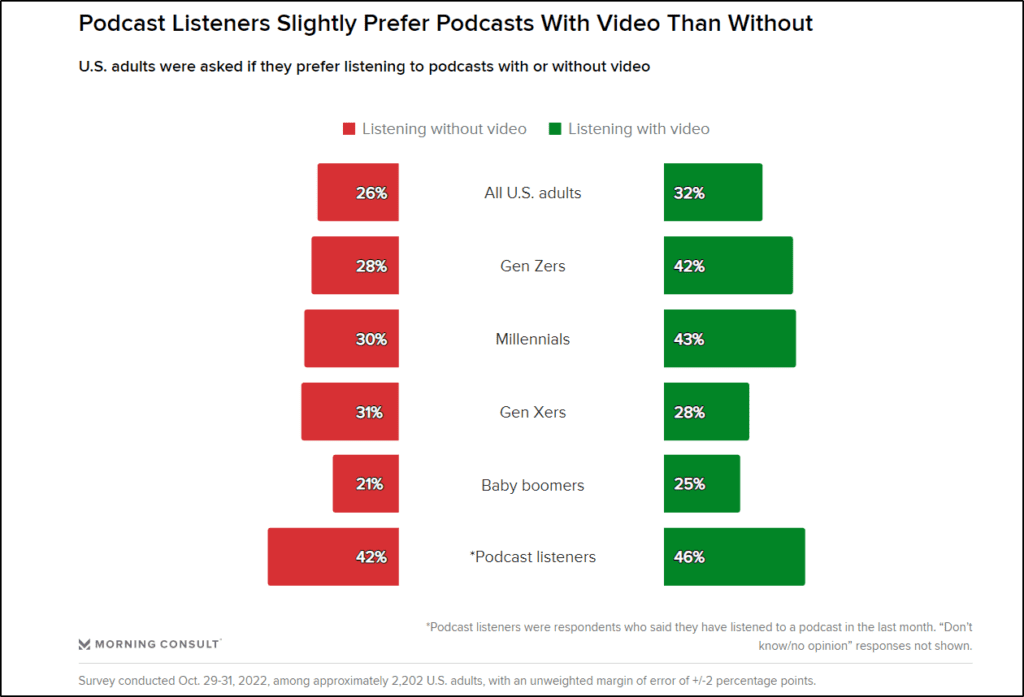

Joe Rogan’s podcast, The Joe Rogan Experience, is one the best examples of repurposing podcasts to video format.
Joe has millions of listeners on Spotify, Apple Podcasts, and other platforms.
But he still publishes every podcast episode on his YouTube channel as well.
As a result, he has amassed nearly 15 million YouTube subscribers, and every new episode of his video podcast gets millions of views.
There are a couple of ways to turn your podcasts into videos.
- Record a video version of your podcast for YouTube and Facebook while the audio version goes out on the conventional podcast platforms.
- If you have the audio version only, turn it into a static video using an image with your brand elements. Buffer’s podcasts are a great example.
You can use Camtasia or Screenflow to convert audio podcasts into static videos.
But if you follow the first approach and record a dedicated video version of your podcast, make sure you have the right recording equipment to create high-quality video podcasts.
You can also use generative AI tools to easily churn out videos from audio and video versions of your podcast. For example, learn more about how YouTube creators can use Pictory for AI video creation.
2. Crop Podcast Video Clips
Once you publish a video podcast, you can repurpose it in several ways to gain more exposure. For example, not everyone has the time to watch a 30-minute or an hour-long video podcast.
So, an easy way to get views and give viewers a taste of your content is by cropping the best parts of your podcasts as 4-5 minute short clips for YouTube, Facebook, Instagram, Twitter, and TikTok.
For example, Tim Ferris has a popular podcast he publishes on YouTube and Facebook along with the conventional audio-only podcast platforms.
But he doesn’t stop there.
He creates multiple short clips from every long-form podcast video and publishes them separately on all his video channels.
These short clips often get more views than the complete podcast episode, bringing thousands of visitors to Tim’s channel.
People also share these short clips on chat apps like WhatsApp and Telegram, increasing your content’s reach and helping you grow your audience.
You can use Camtasia, Screenflow, or any other video editor to crop your podcast and create such clips.
Check out our full list of top picks for video editing software.
3. Create Video Highlight Reels
Highlight reels are traffic magnets because they show the best parts of a long video in a few minutes. Unlike short video clips, highlights combine the best moments of your podcast in one video.
These highlights from Neil deGrasse Tyson’s video podcast are an excellent example.
Combining the best moments from different podcast episodes into one video is another way to repurpose your content into a highlights reel.
So, let’s say you ask every podcast guest about the biggest regret in their life. Simply combine the best responses from 10-15 episodes and compile them in one video.
4. Create Short-Form Social Media Videos
TikTok, YouTube Shorts, and Facebook Reels are on fire these days, and millions worldwide are addicted to the 1-2 minute videos on these platforms.
Seeing the rise of TikTok and the demand for micro video content, both YouTube and Facebook have prioritized short clips in their algorithms and actively promote them in user timelines.
This is why most marketers plan to invest more resources in creating short-form content.
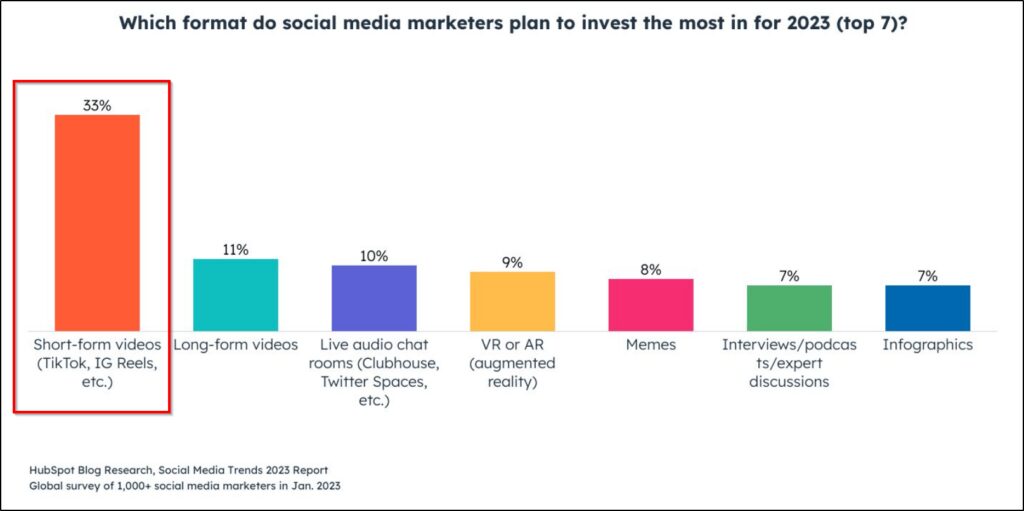

Jay Shetty is among the podcasters who’ve doubled down on Shorts and Reels over the last few months. And his content gets massive traction on both YouTube and Facebook.
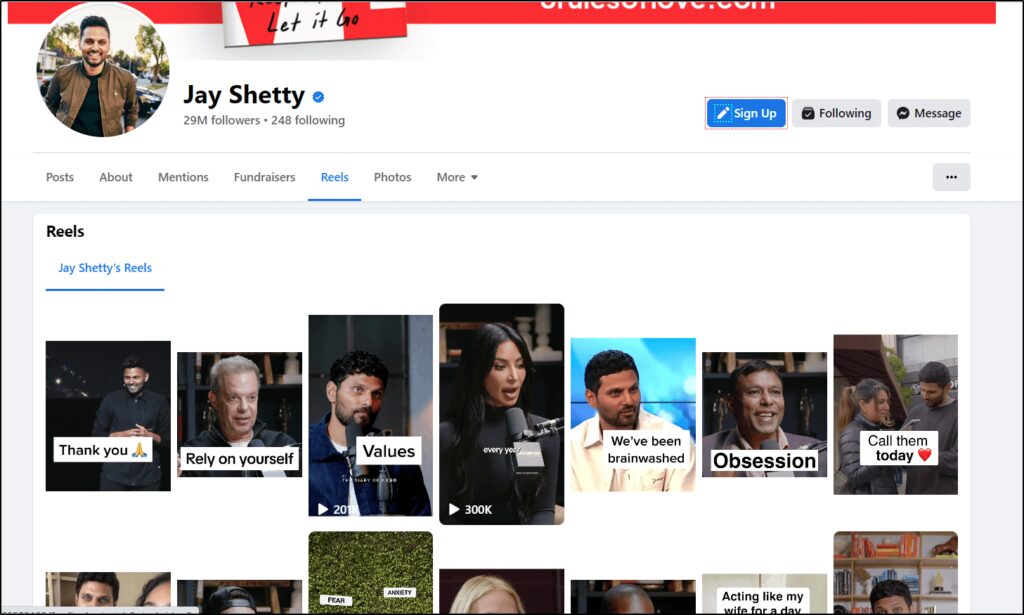

On TikTok, he’s grown to over 3.5 million followers just by posting repurposed short clips from his video podcasts.
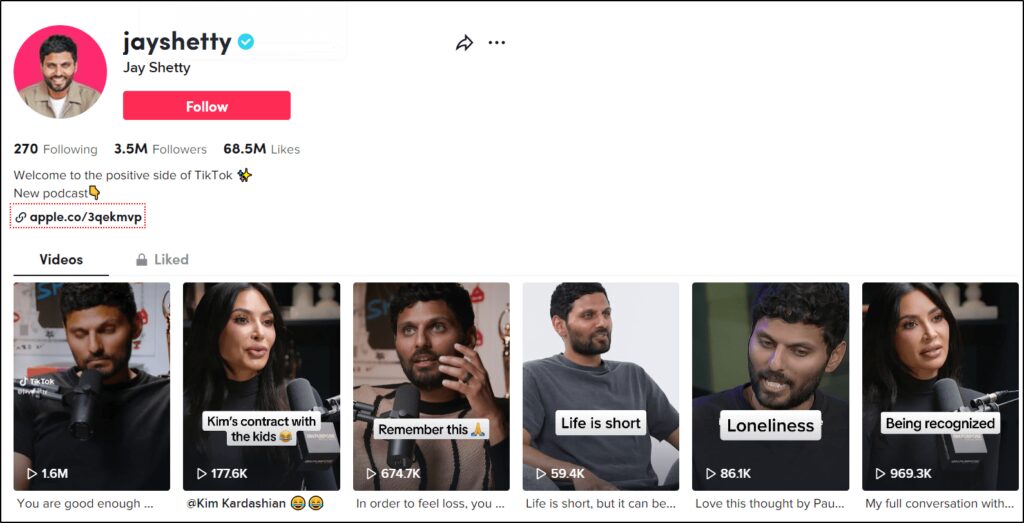

You can easily get 5-10 micro clips from an hour-long podcast. If you only have audio podcasts, you can use captions and animated screens to create micro-content.
Learn more about unlocking the power of short-form video on TikTok.
5. Launch A Membership Site
If you have a growing podcast audience, you can create a membership program to earn a recurring income by offering additional content to your loyal fans.
The best part? You can repurpose your existing podcast content for your membership site.
The Minimalist Private Podcast is an excellent example of this approach.
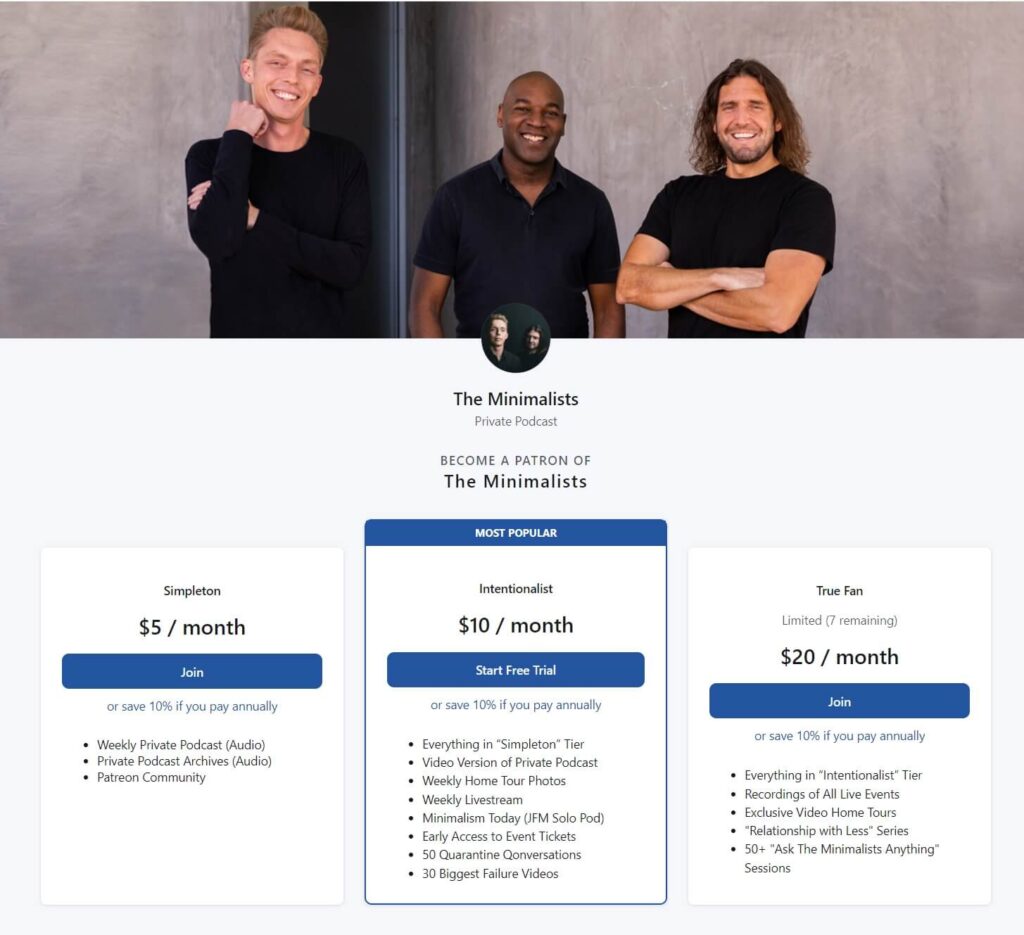

The Minimalist is a leading podcast with thousands of regular listeners. Their Patreon membership offers the video version of their audio podcasts along with a community group to interact with their listeners. In addition, they offer exclusive unedited behind-the-scenes content for their members.
Apart from Patreon, you can use any leading membership platform to offer members-only content.
6. Offer As Bonus Content In Online Courses
Offering audio or video podcast recordings as bonus content is a great way to increase the perceived value of your online courses and membership programs.
Here’s how it works.
Identify the most relevant episodes from your show and bundle them with your courses as bonus content.
But they’re already available for free on your podcast channels, then why should anyone care?
People buy online courses to conveniently access the most critical information in one place. They don’t have the time to dig through your podcast archives to find that information.
So, by offering it as bonus content with your courses, you make your customers’ lives easier.
This is what Joanna Wiebe does in her CopySchool program. She chooses from her most relevant live interviews and podcasts (previously published) and includes them as bonus content in her courses.
And guess what? Even her regular subscribers only watch those videos after purchasing her courses.
7. Transcribe Podcasts For SEO
Google loves high-authority content that solves problems and provides value to users. And podcasts are full of such content.
The problem? Google can’t understand, index, or rank audio content yet.
The solution? Convert podcasts to text content (transcribe).
Transcribing your podcast has several benefits.
- It makes your audio content understandable to Google, which means your podcast starts ranking for relevant keywords in Google Search, the biggest traffic source on the internet.
- It allows your audience to read your podcast discussion instead of listening to it.
This is why Pat Flynn, and most other leading podcasters, publish transcripts on their podcast websites.
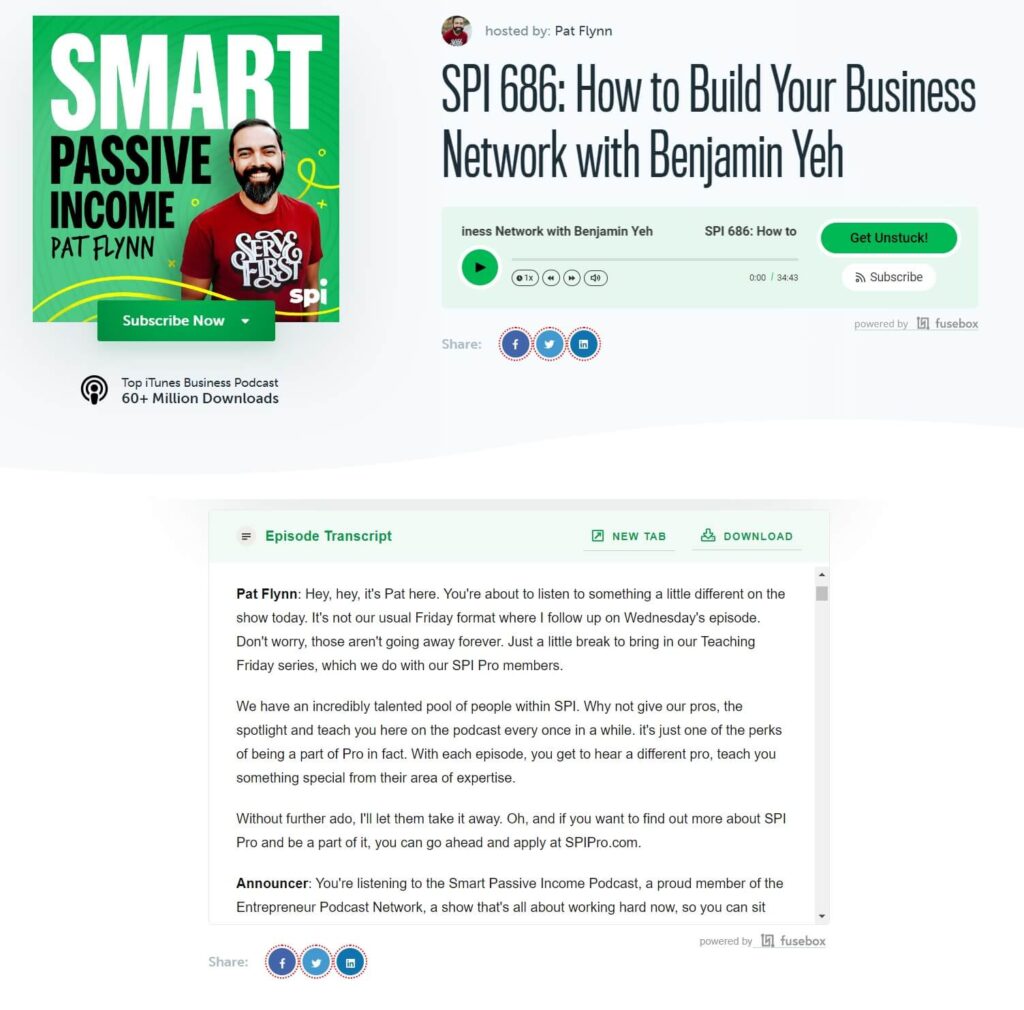

You can also add the transcript to your YouTube and Facebook podcasts, making them easily searchable on these platforms.
So, if you want to 10x your podcast’s impact and gain massive SEO benefits, transcribe every podcast episode on your website.
Speaking of podcast websites, do you have one yet? If not, you’re missing thousands of potential podcast listeners and customers for your online courses.
8. Turn Podcasts Into Multiple Blog Posts
Podcasts are information goldmines you can repurpose into dozens of blog posts for your website.
Let us explain.
Most podcasts are interview-style conversations where the host asks questions the guests answer.
You can pick each question from your podcast, take your guest’s answer and expand it into a blog post by adding more context, information, examples, and relevant stats.
It will be 100% unique content because you’ll include your guest’s quotes and experiences to back your points.
Every podcast can give you 3-4 blog post ideas easily.
Why bother about blog posts when you already transcribe your podcasts?
Because blog posts help you target more informational keywords, optimize your site SEO, and drive additional search traffic.
Ultimately, all this traffic funnels into your email list and helps you drive more course sales.
9. Embed Podcasts In Relevant Content
If you regularly publish blog posts, consider embedding your audio or video podcasts in your content.
Here’s why.
- Embedding multimedia content to your blog posts makes them more valuable for your readers and Google’s search algorithms, helping you rank higher for your target keywords.
- When visitors listen to an embedded podcast in your blog post, they spend more time on your site, directly benefiting your search rankings.
- If you have a popular blog, embedding your podcasts will help you gain more listeners and subscribers.
Most podcast-hosting platforms allow you to embed podcasts in your content. For example, you can copy a podcast’s embed code from Apple Podcasts by clicking share → embed.
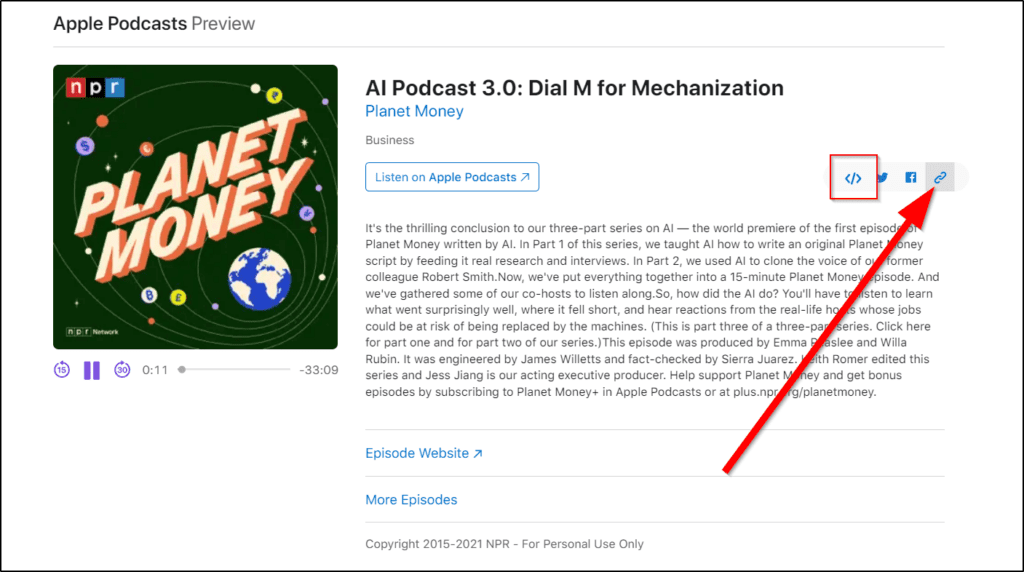

Paste this code in the WordPress editor using the Custom HTML block to show it in your blog post.
10. Pull Quotes For Social Media Posts
People love sharing quotes by celebrities, influencers, and successful people. This is why repurposing your podcasts into shareable quotes is an excellent way to create brand awareness and attract more listeners.
Here’s an easy way to do it.
Identify 5-10 quotes you feel resonate with your audience. Then go to Canva, pick any free design template, copy/paste your quote text, and create a shareable social media image.
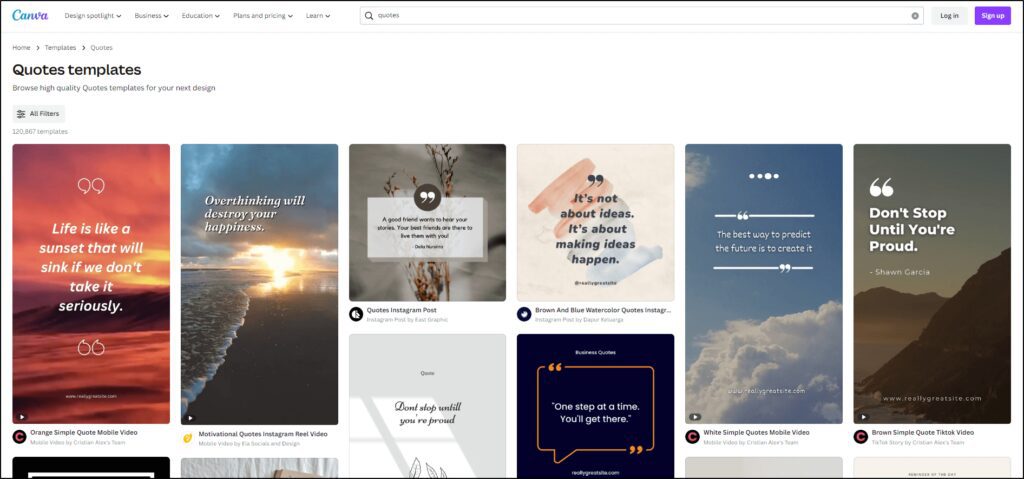

Share these quotes on Twitter, Facebook, Instagram, LinkedIn, and any other platforms where you engage with your audience. Add your podcast link to the image description to help people discover your show.
You can also add these quotes to your blog content, instantly making it more valuable and share-worthy.
11. Use Your Podcast Content For Guest Blogging
Guest blogging is still among the most effective ways to increase brand awareness and, more importantly, get high-authority backlinks to your site.
But with the rise of AI content, the best publications get hundreds of low-quality guest post pitches every day.
How do you stand out? By including 100% unique insights from your podcasts in your guest posts.
Let me explain.
The best publications look for unique and original thoughts in guest posts. When you include original quotes from your podcast in your guest posts and mention this in your pitch, you’re much more likely to get a positive response than a random blogger pitching a rehashed AI article.
You can even pitch the most valuable quotes from your podcast to different high-authority sites in exchange for a backlink.
Editors would love to feature your content because of its originality and relevance to their audience.
12. Discuss on Social Media, Forums, And Groups
One of our favorite ways to repurpose podcasts is to discuss them with my audience on different social media groups and forums.
Every podcast gives you dozens of talking points. So if you have a community around your podcast, create a new discussion thread about it and ask your audience different questions about the show.
For example, Stuff You Should Know, a popular podcast, has a dedicated Reddit page where its hosts and listeners discuss its latest episodes.


This creates a buzz around your show, increases brand awareness, and generates numerous podcast ideas you can use in future episodes.
While you can start these discussions on any platform like Quora, Reddit, or a social media group, we like to keep them on a dedicated online community platform where you can moderate the content and use it in any way you want.
13. Use Podcast Content In Email Newsletters
Email marketing is among the best ways to grow your audience relationship, provide them with consistent value, and turn them into regular customers.
But finding new and engaging email content ideas is challenging for most marketers.
This is why repurposing your podcasts into emails is an excellent idea.
Here are a few ways to do it.
- Summarize your weekly podcast in an email.
- Add your commentary to the main takeaways from your podcast and share a link to the show in your email.
- When you have enough podcasts, create an automated email sequence sharing the best content from your most popular episodes.
- Build on the ideas from your podcast or ask your email subscribers about their thoughts on a show.
You can use any email marketing tool to set up an email newsletter or automated sequences.
14. Create Video Ads For Your Podcast
If you want to grow your podcast fast, consider using YouTube and Facebook ads.
Why? Because if you’ve researched well and know there’s demand for your content, you must proactively reach out to your ideal listener and give them a taste of your content.
So, you can compile the best moments from different episodes in one short video and promote them using video ads. Or you could create a short introductory video describing your podcast’s central theme and topics and the kind of guests you invite.
Ali Abdal’s channel intro video is a great example.
Ideally, the traffic from your podcast ads should go to a landing page on your website where the users can sign up for your email list and become a permanent part of your audience.
You can use any prominent landing page builder to set up such campaigns.
15. Design Infographics
Remember, we used Canva earlier in this post to create social media images? This time, we’ll use it to create an eye-catching infographic to repurpose your podcast.
Here’s how to do it.
Pull the best quotes, points, stats, or anything interesting from a podcast episode or multiple episodes on the same topic.
Then go to Canva and select any infographic template you like.
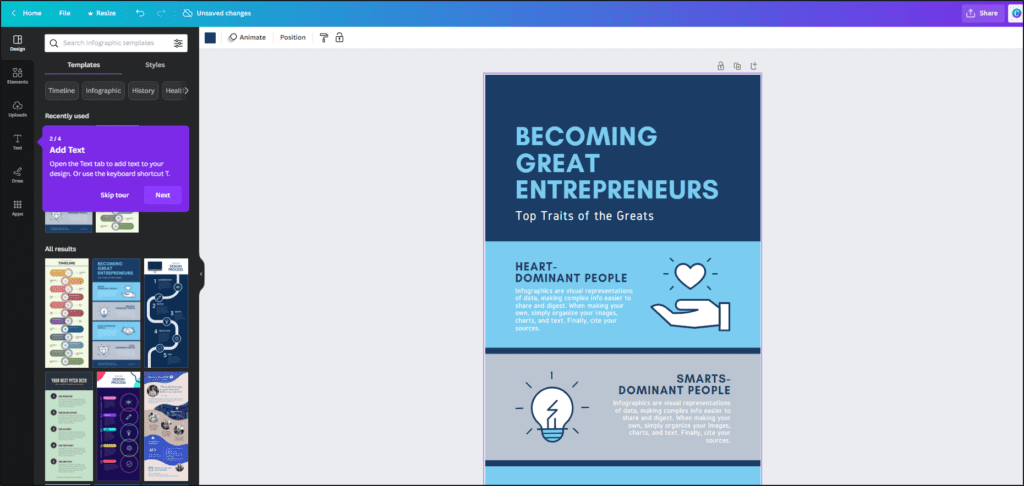

Copy/paste the content you’ve pulled from your podcasts into the infographic template and publish it on your site and social media profiles.
Infographics work well because they’re easy to consume and frequently shared by social media users.
16. Compile Your Podcasts In an eBook
If you’re an experienced podcaster with hundreds of episodes with different guests, seriously consider repurposing all that content into an eBook.
You can simply combine the lessons from the best podcast episodes into a 100-150 page eBook and offer it as a lead magnet on your site or publish it on Amazon.
Tools Of Titans, a New York Times best seller by Tim Ferris, is the perfect example of this strategy.
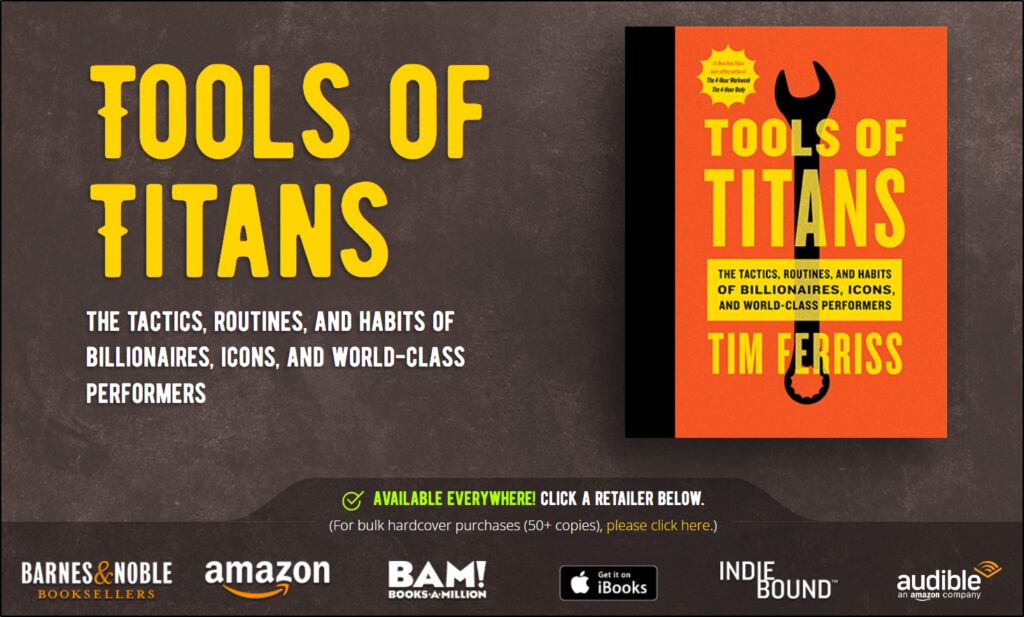

The book mainly summarizes and compiles the conversations Tim’s had with numerous successful businessmen and entrepreneurs over the years.
It also includes some new content, but most of the book is basically repurposed from his podcasts. And there’s nothing wrong with it because, as I said before, not everyone has the time to listen to every episode of your podcast.
So, by giving your audience a summary of your best content in an eBook, you save their time and provide them with actionable advice.
Are You Ready To Maximize Your Podcast ROI?
The repurposing techniques we shared in this article are just a few examples of using podcasts to create new content.
Don’t think of a podcast episode as just one piece of content. Because if you know how to repurpose podcast content, you will never struggle to find content ideas again.
If you don’t have a podcast yet, read our detailed podcasting guide to get started.
Table of Contents



